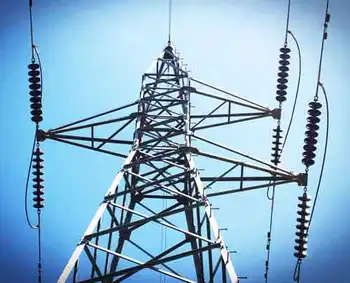Nissan moves into high gear on hybrids
By Globe and Mail
High Voltage Maintenance Training Online
Our customized live online or in‑person group training can be delivered to your staff at your location.

- Live Online
- 12 hours Instructor-led
- Group Training Available
That plan lays out a commitment to leadership zero-emission vehicles that includes production of an all-electric vehicle in 2010 to be mass-marketed globally by 2012.
The plan also includes Nissan's own hybrid system. The one in the current Altima hybrid is purchased from Toyota.
During what it referred to as an "advanced technology briefing" in Yokohama recently, Nissan invited journalists to see engineering development work first-hand and to drive prototypes of its electric vehicle as well as one powered by hydrogen fuel cells and its proprietary new hybrid system.
The electric and hybrid vehicles each use a lithium-ion battery technology under development by Nissan in concert with NEC of Japan.
The production of a purely electric vehicle (EV) by 2010 is certainly ambitious. Although 2012 may seem like a ways off, it is a brief period in terms of new-vehicle development; the plan is even more impressive in that it incorporates an all-new drivetrain.
The EV prototype we drove in Japan is a current version of Nissan's funky little front-drive Cube. Canada will get the next-generation Cube and the guess is that this will become Nissan's all-electric vehicle.
As currently configured, the EV uses an 80-kilowatt motor and inverter. It was most impressive on the test track, exhibiting the usual electric vehicle cues: tremendous oomph off the line and almost silent running.
Because electric motors produce maximum torque at idle, the powerful launch is not surprising. What's impressive is the level of performance available. I saw almost 100 km/h on the track and the car was still accelerating, hard, before running out of room.
The engineer accompanying me said the EV was capable of "160 and 160" — a top speed of 160 km/h and a range of 160 kilometres, though he acknowledged that under heavy use the range would drop to about 140 km.
The EV's silent running may prove to be an issue. A group of visually impaired Americans has threatened to sue makers of electric and hybrid vehicles that shut down when they come to a stop because the vehicles are too quiet ? pedestrians can't hear them.
The prototype hybrid we drove was equally impressive, especially in terms of how fast it could be driven on pure battery power before the gasoline engine was needed to help out. I eased up to almost 100 km/h on the flat portion of the test facility on pure electric power.
The Nissan vehicle was also vastly superior to the others I've sampled in the seamless transition to and from hybrid operation. Most of the dynamic prowess of both the pure-electric and hybrid prototypes can be credited to the lithium-ion battery pack Nissan and NEC are developing.
The 80-kw motor and inverter and the advanced lithium-ion battery pack rest beneath the floor. The battery pack is made up of layers of flat cells (other packs use cylindrical ones); the flat cells are laminated together and produce twice the power of conventional nickel-metal-hydride batteries.
The hybrid prototype we drove showcased two new technologies Nissan refers to as "breakthroughs." One is that it is a rear-drive system, and the other that it operates as a parallel hybrid.
The powertrain has no torque converter, but incorporates two dry clutches. Under changing driving conditions, the motor switches between the two clutches. At idle, the battery powers the motor. Under regular driving, the engine powers the motor and also recharges the battery.
We got the hybrid up to almost 100 km/h on a flat piece of road before the engine kicked in to help out. Under acceleration, the engine and battery both supply power; while decelerating or braking, energy is captured to recharge the battery.
The hybrid is to appear in a rear-wheel-drive Infiniti next year.











